Theory and practice of hobby for IT person
In the article devoted to adaptation on a remote, we touched the topic of a hobby. For a person whose whole life is concentrated inside the apartment, this is perhaps one of the necessary elements of comfort for long periods of time. In this article we will develop this idea - the essence here is not only in communication, but also in stimulating more efficient work on major projects.
“Too busy for a hobby,” is the wrong wording for the remote person.
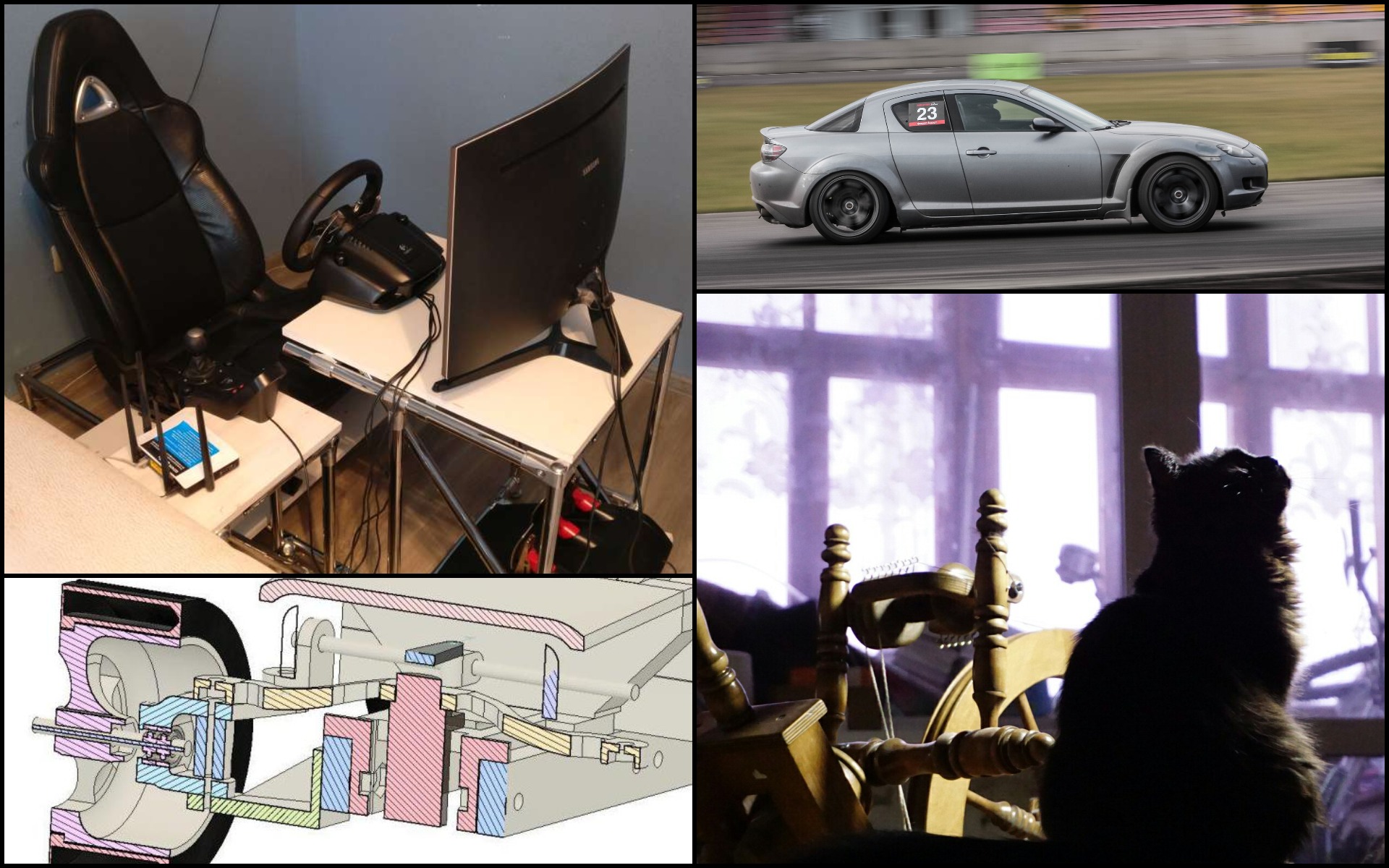
Remote work really does not give much needed “office” communication (we wrote about this in one of the past articles ). No joint smoke breaks and lunches. But the struggle with the consequences of a remote format does not require any “overcoming”. You can simply arrange your life so that lack of communication and fatigue from work does not accumulate.
')
Hobbies are a great tool for managing your mood, and our employees, albeit unconsciously, actively use it. But before we talk about their interests, a bit of useful theory.
Virtually any hobby requires concentration and some mental effort, just like work. But work and hobbies are not identical, and therefore have different effects on our brain and its performance. What is the difference?
It would seem that hobbies and home projects (or, as they are sometimes called, pet projects) may well turn into something that brings money. This is how Gmail and Uber started. And what startup would not want to repeat their success? But not so easy to do. The ideology of a typical startup is “fail faster.” In the world of technology, time plays a key role. If you slowly promote your project, you will be ahead of competitors. Therefore, it is necessary to estimate whether the idea has prospects as soon as possible. In principle, this can be said about all projects on the main job: deadlines always matter. Based on this idea, Hiut Denim Co at Medium outlined three main points that distinguish a hobby or a home project from an ambitious startup or other business project :
Our employees seem to agree with these statements.
An office employee from the metropolis today does not have much time to devote to his hobbies. About Moscow two hours one way from home to work, I do not say, it is generally life on the road. But even if you have to travel an hour in a transport or private car, in 12 working days, you’ll get a full day lost from life.
You can rely on the inhuman willpower and try to find one hour for your hobby every day. But this approach is not for everyone. If it has a positive effect on many people, it will eventually lead to the exhaustion of overwork.
It is much more effective to switch several times a day (although, given that distraction is a diversion of differences). Quite a lot of published works are devoted to this topic. For example, specialists from the Department of Organizational Behavior and Personnel Management at the University of Toronto have shown that this is the way to replenish the store of forces necessary to control one’s own behavior and degree of concentration. A study of the Draugiem Group revealed that effective work is not the same as time consuming, when the very “replenishment of forces” is organized correctly. 10% of the most productive employees in their sample spent on work even less time than all the others, but on average once every 52 minutes they took breaks for 17 minutes. Moreover, it was not any break that had a positive effect on productivity, but a fundamental change of activity, i.e. participants spent 17 minutes not on checking email or watching videos on YouTube, but on reading books, chatting.
The above references to research should not be taken as a guide to accurate calculation of work and rest minutes. In the end, it is something like an “average hospital temperature” on a large sample of people. The point here is that much more effective work can be achieved by competently combining it with those activities that do not require an effort of will to hold attention, but provide an opportunity for self-realization outside a rigid framework. However, the standard office schedule usually does not allow such liberties. In some offices, they even ensure that employees are not once again distracted by personal affairs and do not reduce productivity.
On the remote it is easier to choose a comfortable daily routine. And socialization, accompanying many types of hobbies, will help to cope with forced hermit.
In 2014, Kevin Eshleman found out that people who have creative hobbies, often use a creative approach to performing their tasks in their main job. It would seem that in order to achieve more, a business should force employees to create. But no. Analysis of the results showed that greater efficiency in the work gives a feeling of complete control over the situation in your free time (ie, freedom in creativity).
By the way, examples of the positive influence of a hobby on work can be found not only in the reports of psychologists, but also among scientific tales. Thus, the practice in painting helped Galileo to assume that the moon has an uneven surface, with mountains and craters (contrary to the generally accepted view that its surface is smooth). Drawing in oil, he perfectly imagined how three-dimensional objects look on a flat canvas and just saw a familiar picture through a telescope. Those. Knowledge from practice in a fundamentally different field worked at a completely unexpected moment, allowing to look at the problem from a different angle.
The history of Galileo is an example of the expansion of knowledge through hobbies. But the impact of such additional activity has on the level of physiology. Playing musical instruments helps to strengthen the connection between the hemispheres of the brain; puzzles, videos and card games change the neural paths and synapses, increasing the ability to self-organize. And in general, any additional skills help the brain to build new neural connections, as a result, work better and faster.
A well-known fact is that at Google, employees can spend 20% of their time on side projects. The meaning of this rule is simple - this way you can increase productivity in the remaining 80% of working time.
Hobbies and home projects are not just the satisfaction of ambition and self-expression. If one of the aspects of the main work causes stress (for example, tight deadlines for a project), then a hobby is switching to an activity that reduces the level of stress hormones in the body.
The authors of the book The Willpower instinct believe that stress puts the brain in a state of waiting for a “quick reward” for their work. We seem to expect that by the end of the week we will reward ourselves with “beer on Fridays” or rampant shopping at the weekend. But in fact, this “quick reward” does not solve the original problem - it does not relieve stress. The true solution is at the level of physiology, regulation of the corresponding hormones. Exercise plays a large role in this process, but creativity is not the least of all - the same playing of musical instruments and music in any form, reading is actually any activity that helps to distract . Having a hobby, especially creative one, breaks the “work more to spend more” template, increases the degree of satisfaction with the current state of things (work, and life in general), reducing the likelihood of burnout.
To put it in simple language, a hobby is a way to take a break from yourself, from a career and a burden of responsibility.
A couple of links for those who are interested:
Personnel officers, especially large companies, use all available methods to somehow classify the incoming flow of candidates - from the “about hatches” tasks to the questions “who do you see yourself in our company after 5 years”. The presence and nature of the hobby is another marker in favor of a candidate for a position where passion, drive and independence are needed. It is curious that while many IT professionals and people professionally engaged in science, just do not tend to disclose their personal interests. This is understandable - unfortunately, this world is full of personnel officers and managers who believe that all of us are “cogs in a big mechanism”, i.e. only corporate interests should be on your mind. And it is not clear how a serious professional community will react to cross-stitching or radio-controlled toys.
But we are interested in the lives of employees outside of work. Hobbies are an important part of them, which sometimes unexpectedly manifests itself even on common calls, helps them self-realize and find like-minded people in a team. And here are some interesting examples.
Dmitry Masterov, Automated Software Testing Specialist
I have several hobbies. I play the guitar in a gang - we play at local venues. When working remotely with music, everything is simple: you have a 15-minute break from the fact that your brain has boiled up - you can take a guitar and play a couple of songs without disturbing anyone. It helps me to clear my head.
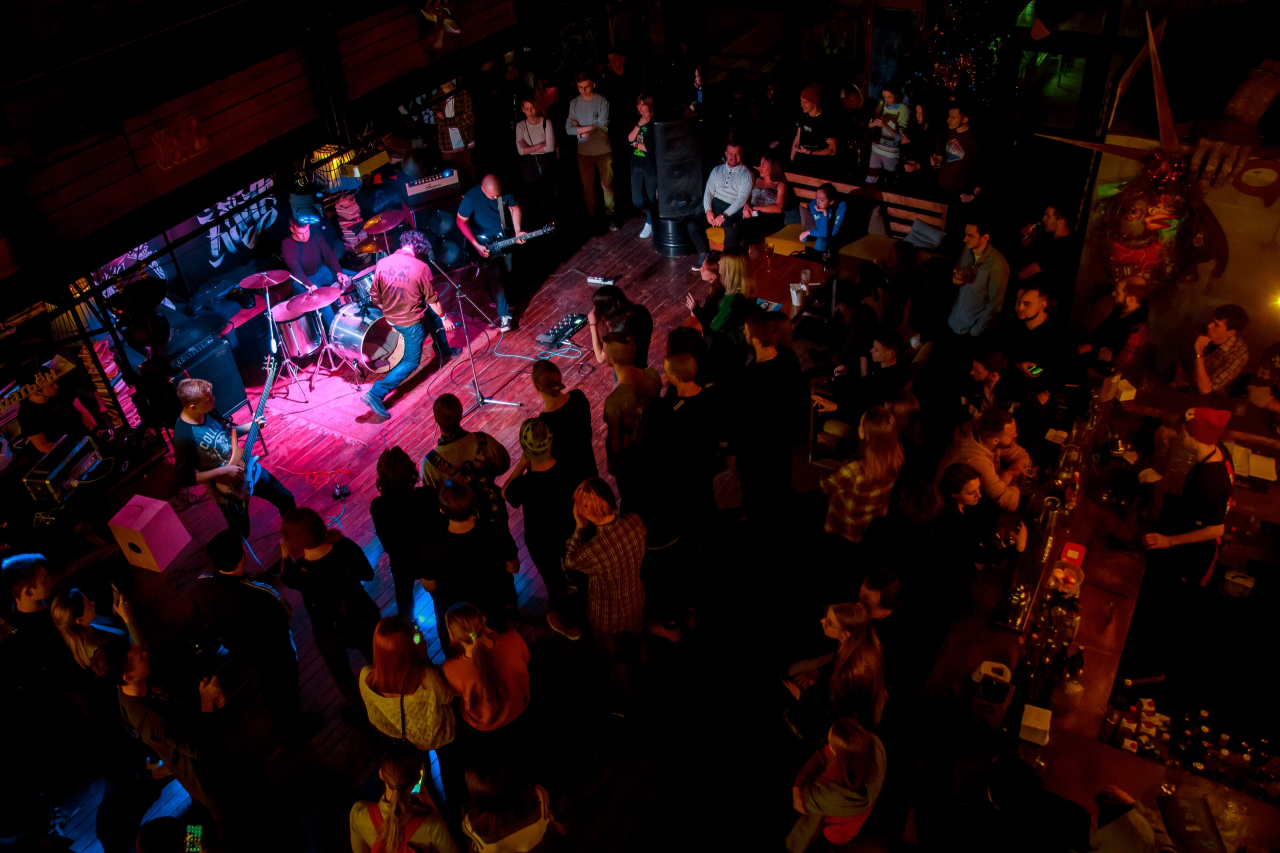
And I'm a big car enthusiast. In the summer season I participate in races on the local highway, in front of which I gradually refine my car.

By the way, just such a refinement was the beginning for another entertainment.
I felt that I didn’t have enough lateral support for the standard driver’s seat, so the question of replacing it was raised. I found and installed a new armchair, but people usually don’t sell or throw out the old one, but put it in the garage (in case of adoption of unclear alterations laws). Not having a garage, I brought it home. Once passing by, I got into it and thought, why not assemble a simple cabin construction at home and put a simulator there?
No sooner said than done. I threw a simple design in a 3D editor, made a drawing. Originally planned to weld, but for this you need a normal metal, it is heavy, i.e. There will be problems with the placement of the house. Instead, the father advised to use nickel-plated pipes from the joker system (furniture components), complementing them with pieces of the table top of the furniture discount.
From the equipment there I connected a laptop with a simulator Assetto Corsa and installed an amateur steering wheel of the Logitech G27, replacing their reduced steering wheel with a standard car steering wheel through an adapter printed on a 3D printer. This controller is quite old, but the used options can still be found in good condition. Newer models of approximately the same price category do not have significant advantages; they differ only in the shape of the steering wheel, so for me there was no point in them either.
The result was a cockpit for home workouts on the simulator. This turned out to be especially valuable in the winter - in Siberia, in a sports car, you can’t train in a snowdrift.

The simulator allows you to tamper with your hand, to study the behavior of the machine, without feeling overload with your body. It really is not that simple. In fact, a big piece of sensations is cut off, and you start thinking about how to realize what you need from a technical point of view: how to move your arms and legs, when to switch, how to choose a trajectory. Such training is much better than nothing. Moreover, I chose a popular simulator, for it there are a lot of amateur tracks and machine extensions, where the physics of suspension, acceleration and everything else is laid, right down to rubber. I found the mod and under my sports car.
It was not useful for me alone. I have a lot of friends who are interested in motor racing and do not mind riding a simulator. Therefore, as soon as the cockpit earned, the idea arose to get together and arrange a small “room” championship. Now we are periodically going to compete.
It’s a pity that there is only one cockpit, so we have to limit ourselves to a very narrow circle of acquaintances, because in order to show some kind of result, everyone needs some time to try.
Anna Rozhkova, Automated Software Testing Specialist
In the last year of the university I saw a report on old crafts. As an example, they showed how to make a simple decoration. After trying to repeat it, I became seriously interested and began to study. Then it was 2010, when in our region the public Internet was not so developed, and accordingly there was little information in Russian. But pulling up English, I got access to foreign descriptions of techniques and approaches.
After eight years, I already know how to knit, embroider, etc. But weaving doesn’t bother precisely weaving - apparently, this is my occupation.
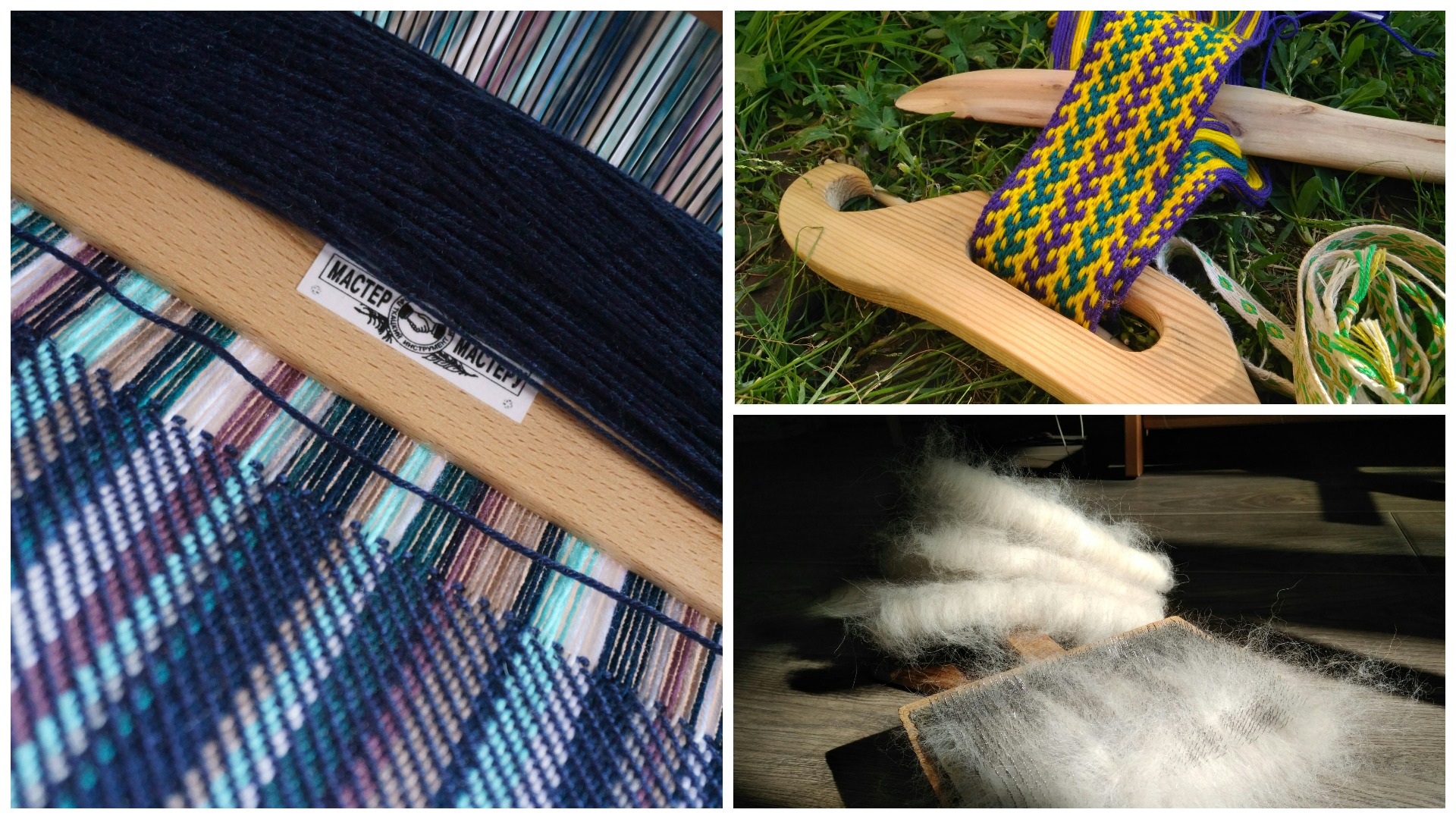
Initially, it was interesting to me to just learn, but in parallel with my experiments in the Omsk region, the first ethnographic festivals began to be held. Previously, all the attention of the community was focused on fantasy, but from a certain point there appeared a movement of reenactors going deeper into history. It is possible that they were prompted by the development of the Internet and social networks as channels of communication. One way or another, a community has begun to form, where everyone focuses on his own: someone forges a weapon, someone does household things and promotes some other equipment. And they themselves came to me - they began to look for fabrics or individual elements of costumes.

For me, all this is not a source of income, but first and foremost an interesting task. When a person reconstructs a costume of the 10th century, for example, he studies books, studies archaeological finds, and looks at thematic exhibitions in museums. Turning to me, they usually bring some photographs of exhibits of museums from the central part of Russia (historical studies are much better developed here than we do), or even limited to sketching historical literature and describing it: such a width, such an ornament such a composition. What to do, the chroniclers usually did not care to describe the process of production of parts of clothing. As for me, from the set of existing techniques one should choose the most suitable ones, imagining what each of them will give at the output. And then you need a certain attitude. Sometimes it takes several days before work begins until I understand how to approach this.
The main thing is that at this moment there should be no deadlines above me. Sometimes it happens that people do not think over the details in advance, but turn at the last moment. And then I constantly think about it - that I will not have time. Part of the fun of it is lost.
Honestly, some ideas are constantly being born to me. And I implement them as far as possible - when the machine is released. It soothes me, switches the brain from intense thoughts about work, lets enjoy the process.
Vladimir Vasyaev, leading specialist in automated software testing
From school I was interested in programming in its various manifestations. How does it look in practice? You sit and do something in the computer - it all remains in the computer. With such a view of the world, the first acquaintance with the Arduino was a real discovery for me: you did something on your computer, and it comes to the real world, whether it's a light control timer or a radio-controlled toy. You can control real world devices!
Over time, interest in the Arduino grew into a full-fledged 3D printer. I wanted to assemble it according to the RepRap classic based on stepper motors from Soviet 5.25 disk drives. But in the hometown there was nowhere to print the details and find normal guides. And the engines still had to be ordered from China.
It's funny that 3D printing came into my life along with the idea that all “soldering” projects need to be thrust somewhere - they need cases of individual sizes, which are much easier to print than to make somewhere to order. Plus, the idea was to start casting aluminum from casting. The first is being implemented on a very limited scale, and has not yet reached the second hand. But although the initial ideas were not fully implemented, as it was used, it turned out that a 3D printer in the modern world is like a pliers: a universal and for some absolutely indispensable tool. Of course, there are a lot of people who do not hold any tools at home. But if the pliers suddenly appear, there will be a use for the printer.
A 3D printer teaches a completely different look at things. You do not use available objects to solve your problems, but you design them yourself, starting from the smallest details. And then you need a head, sharpened to 3D-modeling. So I refreshed my knowledge of 3D (I once studied it in college, but before the advent of the printer and did not remember) and gradually improve life through the realization of those things that I really need, and not those that are available for purchase, - from lampshades to kitchen accessories. In the fall, even the “Maxilekt” logo was printed for a meeting with colleagues.
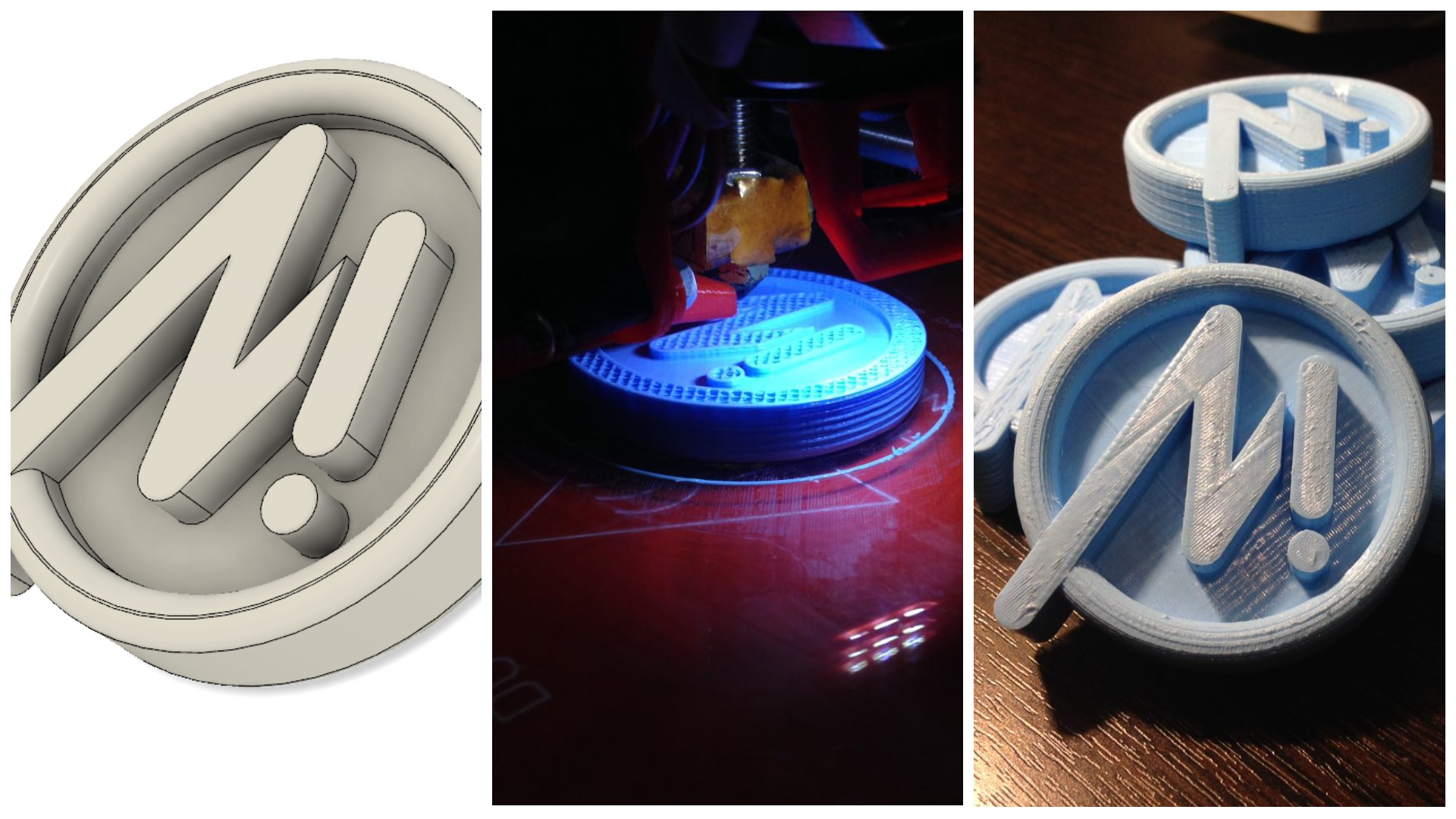
The last project is a radio-controlled machine that I create from scratch. By the way, this task is also with history. I lived to be 30 years old, but I never had a radio-controlled car. And so I bought it myself. At first it was very cool - my passion for real offroad played a significant role here.
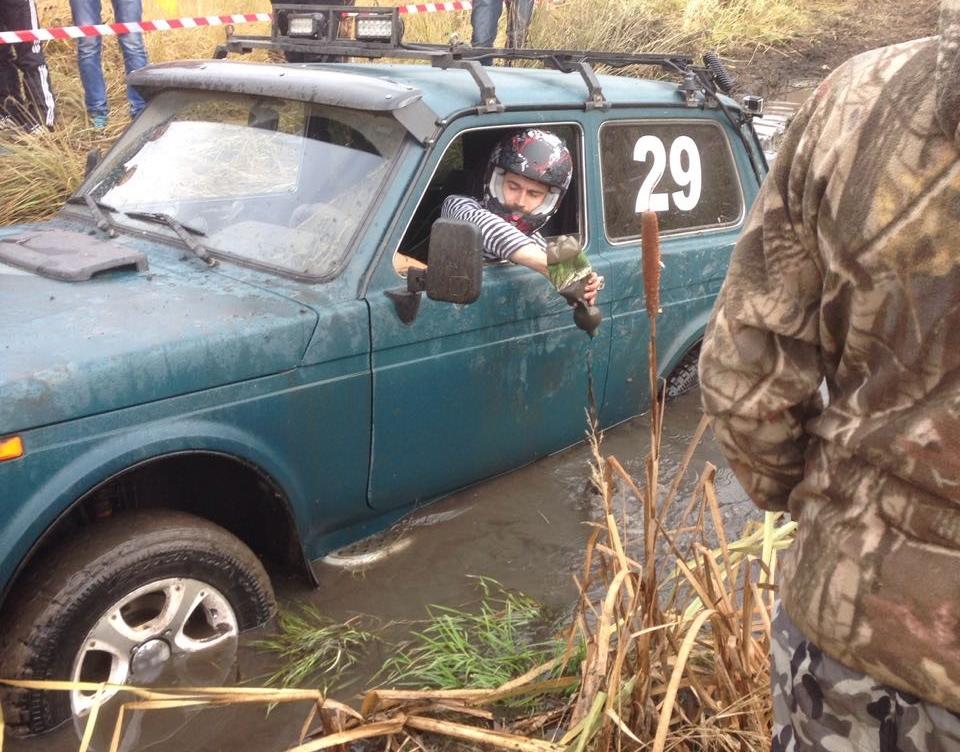
The radio-controlled model behaves almost like a real one. It turned out to be very cool to pass on it “to unlock” the obstacles on a crumpled blanket or to pass between the cushions of the sofa. But after a few days of experiments, it seemed to me that the machine was kind of sluggish. And the first thing I did was print a new case, which allows using one 18650 battery instead of two finger batteries. Raising the torque in this way (two AA batteries - 3 V, 18650 - 3.7 V), I made her tear off the wheels, so the next step is to print big tires so that the moment is distributed a little differently. With the new wheels, she no longer had enough time to pass through some of the irregularities of the sofa. And at that moment I realized that I need to redo the gearbox. But because of the body of the machine, what I needed was not to be printed there — there was no room. So I started to do everything from scratch.
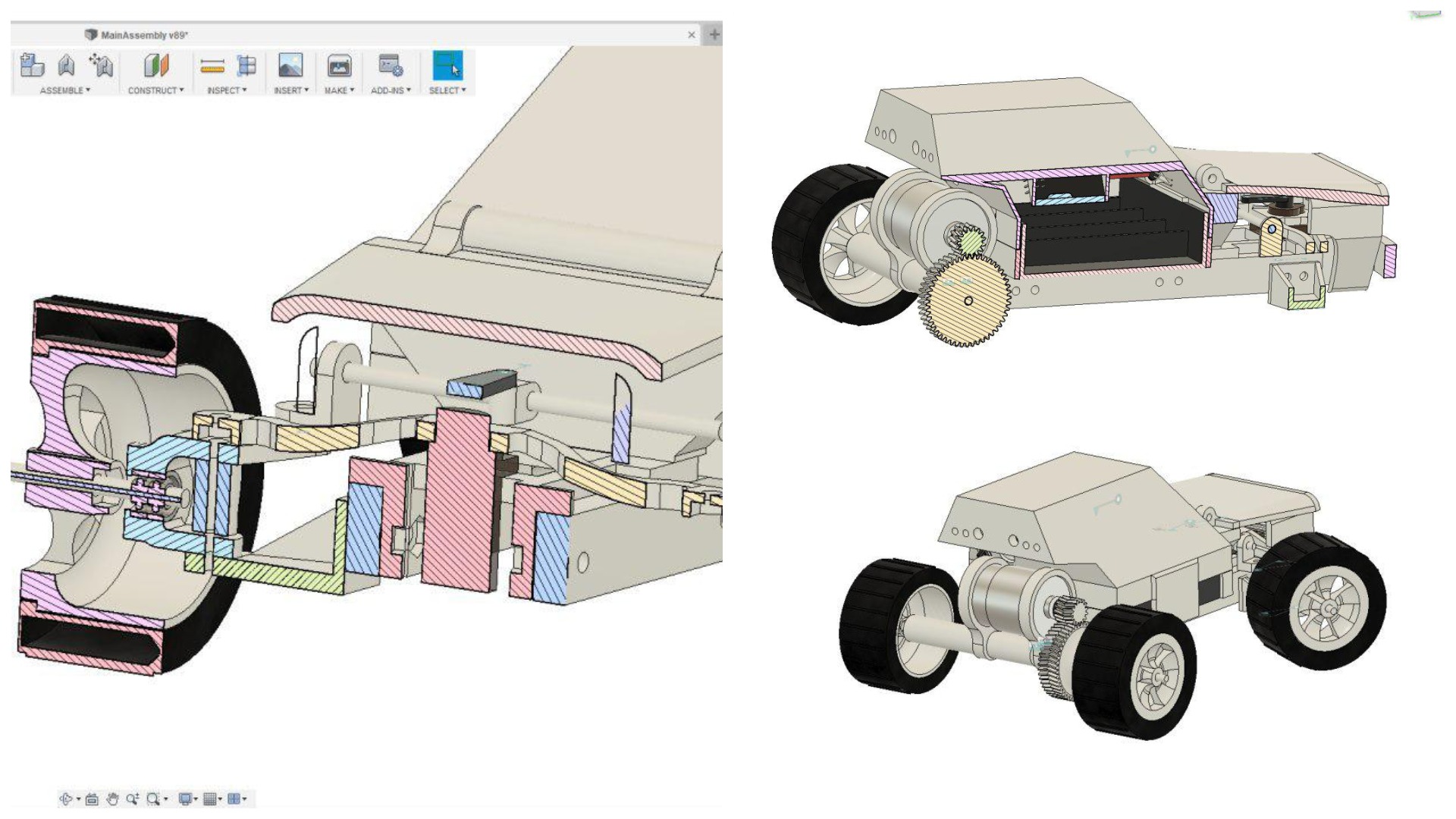
In libraries of models where I spread the practices, it is full of similar projects. But in contrast to the work where you need to produce a result in a given time frame, here the main process, supported by a successful result, but not limited in time. On the whole, any hobby, be it a real offroad or designing a reduced abstract “sofa-road builder”, expands the boundaries of my possibilities. How could I have imagined a couple of years ago that I would model and print a working radio-controlled model from scratch? Immediately a lot of small issues. For example, the Arduino has a very limited amount of available memory, so I had to jump not only with the mechanics, but also with the optimization of the radio communication between the console and the machine - I struggled a couple of evenings with a lag of half a second. As with the passage on the "Niva" through 40-centimeter logs, which as you gain experience you learn to storm in the jumper, this is another challenge. Solving such problems for fun, you realize that nothing is impossible - there are no impassable paths. Probably, in parallel, this teaches some project management - you begin to calmly tackle those tasks, the full path of implementation of which at the start could not yet be formulated.

PS We publish our articles on several sites Runet. Subscribe to our pages on the VK , FB or Telegram channel to find out about all our publications and other news from Maxilect.
“Too busy for a hobby,” is the wrong wording for the remote person.

Remote work really does not give much needed “office” communication (we wrote about this in one of the past articles ). No joint smoke breaks and lunches. But the struggle with the consequences of a remote format does not require any “overcoming”. You can simply arrange your life so that lack of communication and fatigue from work does not accumulate.
')
Hobbies are a great tool for managing your mood, and our employees, albeit unconsciously, actively use it. But before we talk about their interests, a bit of useful theory.
Where is a hobby and where is work?
Virtually any hobby requires concentration and some mental effort, just like work. But work and hobbies are not identical, and therefore have different effects on our brain and its performance. What is the difference?
It would seem that hobbies and home projects (or, as they are sometimes called, pet projects) may well turn into something that brings money. This is how Gmail and Uber started. And what startup would not want to repeat their success? But not so easy to do. The ideology of a typical startup is “fail faster.” In the world of technology, time plays a key role. If you slowly promote your project, you will be ahead of competitors. Therefore, it is necessary to estimate whether the idea has prospects as soon as possible. In principle, this can be said about all projects on the main job: deadlines always matter. Based on this idea, Hiut Denim Co at Medium outlined three main points that distinguish a hobby or a home project from an ambitious startup or other business project :
- It is not the main source of income. If the project fails, no one will die of hunger.
- It does not “burn” in time. You can connect to the project when you want, do not have to plan tight employment due to impending deadlines. You can afford to experiment with new approaches, technologies and ideas, even if they require more time to implement.
- You are drawn to these projects. Despite distractions, family difficulties and other obstacles, I want to return to the project again.
Our employees seem to agree with these statements.
What does it have to do with the remote?
An office employee from the metropolis today does not have much time to devote to his hobbies. About Moscow two hours one way from home to work, I do not say, it is generally life on the road. But even if you have to travel an hour in a transport or private car, in 12 working days, you’ll get a full day lost from life.
You can rely on the inhuman willpower and try to find one hour for your hobby every day. But this approach is not for everyone. If it has a positive effect on many people, it will eventually lead to the exhaustion of overwork.
It is much more effective to switch several times a day (although, given that distraction is a diversion of differences). Quite a lot of published works are devoted to this topic. For example, specialists from the Department of Organizational Behavior and Personnel Management at the University of Toronto have shown that this is the way to replenish the store of forces necessary to control one’s own behavior and degree of concentration. A study of the Draugiem Group revealed that effective work is not the same as time consuming, when the very “replenishment of forces” is organized correctly. 10% of the most productive employees in their sample spent on work even less time than all the others, but on average once every 52 minutes they took breaks for 17 minutes. Moreover, it was not any break that had a positive effect on productivity, but a fundamental change of activity, i.e. participants spent 17 minutes not on checking email or watching videos on YouTube, but on reading books, chatting.
The above references to research should not be taken as a guide to accurate calculation of work and rest minutes. In the end, it is something like an “average hospital temperature” on a large sample of people. The point here is that much more effective work can be achieved by competently combining it with those activities that do not require an effort of will to hold attention, but provide an opportunity for self-realization outside a rigid framework. However, the standard office schedule usually does not allow such liberties. In some offices, they even ensure that employees are not once again distracted by personal affairs and do not reduce productivity.
On the remote it is easier to choose a comfortable daily routine. And socialization, accompanying many types of hobbies, will help to cope with forced hermit.
Hobby as a tool to increase efficiency
In 2014, Kevin Eshleman found out that people who have creative hobbies, often use a creative approach to performing their tasks in their main job. It would seem that in order to achieve more, a business should force employees to create. But no. Analysis of the results showed that greater efficiency in the work gives a feeling of complete control over the situation in your free time (ie, freedom in creativity).
By the way, examples of the positive influence of a hobby on work can be found not only in the reports of psychologists, but also among scientific tales. Thus, the practice in painting helped Galileo to assume that the moon has an uneven surface, with mountains and craters (contrary to the generally accepted view that its surface is smooth). Drawing in oil, he perfectly imagined how three-dimensional objects look on a flat canvas and just saw a familiar picture through a telescope. Those. Knowledge from practice in a fundamentally different field worked at a completely unexpected moment, allowing to look at the problem from a different angle.
The history of Galileo is an example of the expansion of knowledge through hobbies. But the impact of such additional activity has on the level of physiology. Playing musical instruments helps to strengthen the connection between the hemispheres of the brain; puzzles, videos and card games change the neural paths and synapses, increasing the ability to self-organize. And in general, any additional skills help the brain to build new neural connections, as a result, work better and faster.
A well-known fact is that at Google, employees can spend 20% of their time on side projects. The meaning of this rule is simple - this way you can increase productivity in the remaining 80% of working time.
Cure for stress and burnout
Hobbies and home projects are not just the satisfaction of ambition and self-expression. If one of the aspects of the main work causes stress (for example, tight deadlines for a project), then a hobby is switching to an activity that reduces the level of stress hormones in the body.
The authors of the book The Willpower instinct believe that stress puts the brain in a state of waiting for a “quick reward” for their work. We seem to expect that by the end of the week we will reward ourselves with “beer on Fridays” or rampant shopping at the weekend. But in fact, this “quick reward” does not solve the original problem - it does not relieve stress. The true solution is at the level of physiology, regulation of the corresponding hormones. Exercise plays a large role in this process, but creativity is not the least of all - the same playing of musical instruments and music in any form, reading is actually any activity that helps to distract . Having a hobby, especially creative one, breaks the “work more to spend more” template, increases the degree of satisfaction with the current state of things (work, and life in general), reducing the likelihood of burnout.
To put it in simple language, a hobby is a way to take a break from yourself, from a career and a burden of responsibility.
A couple of links for those who are interested:
- Does It Increase Affective Complexity? Applying the Dynamic Model of Affect (DMA)
- Performance creative correlation outcomes
HR look
Personnel officers, especially large companies, use all available methods to somehow classify the incoming flow of candidates - from the “about hatches” tasks to the questions “who do you see yourself in our company after 5 years”. The presence and nature of the hobby is another marker in favor of a candidate for a position where passion, drive and independence are needed. It is curious that while many IT professionals and people professionally engaged in science, just do not tend to disclose their personal interests. This is understandable - unfortunately, this world is full of personnel officers and managers who believe that all of us are “cogs in a big mechanism”, i.e. only corporate interests should be on your mind. And it is not clear how a serious professional community will react to cross-stitching or radio-controlled toys.
But we are interested in the lives of employees outside of work. Hobbies are an important part of them, which sometimes unexpectedly manifests itself even on common calls, helps them self-realize and find like-minded people in a team. And here are some interesting examples.
How to rest "Maxillect"
From the seat dismantled from the car to mass events
Dmitry Masterov, Automated Software Testing Specialist
I have several hobbies. I play the guitar in a gang - we play at local venues. When working remotely with music, everything is simple: you have a 15-minute break from the fact that your brain has boiled up - you can take a guitar and play a couple of songs without disturbing anyone. It helps me to clear my head.

And I'm a big car enthusiast. In the summer season I participate in races on the local highway, in front of which I gradually refine my car.

By the way, just such a refinement was the beginning for another entertainment.
I felt that I didn’t have enough lateral support for the standard driver’s seat, so the question of replacing it was raised. I found and installed a new armchair, but people usually don’t sell or throw out the old one, but put it in the garage (in case of adoption of unclear alterations laws). Not having a garage, I brought it home. Once passing by, I got into it and thought, why not assemble a simple cabin construction at home and put a simulator there?
No sooner said than done. I threw a simple design in a 3D editor, made a drawing. Originally planned to weld, but for this you need a normal metal, it is heavy, i.e. There will be problems with the placement of the house. Instead, the father advised to use nickel-plated pipes from the joker system (furniture components), complementing them with pieces of the table top of the furniture discount.
From the equipment there I connected a laptop with a simulator Assetto Corsa and installed an amateur steering wheel of the Logitech G27, replacing their reduced steering wheel with a standard car steering wheel through an adapter printed on a 3D printer. This controller is quite old, but the used options can still be found in good condition. Newer models of approximately the same price category do not have significant advantages; they differ only in the shape of the steering wheel, so for me there was no point in them either.
The result was a cockpit for home workouts on the simulator. This turned out to be especially valuable in the winter - in Siberia, in a sports car, you can’t train in a snowdrift.

The simulator allows you to tamper with your hand, to study the behavior of the machine, without feeling overload with your body. It really is not that simple. In fact, a big piece of sensations is cut off, and you start thinking about how to realize what you need from a technical point of view: how to move your arms and legs, when to switch, how to choose a trajectory. Such training is much better than nothing. Moreover, I chose a popular simulator, for it there are a lot of amateur tracks and machine extensions, where the physics of suspension, acceleration and everything else is laid, right down to rubber. I found the mod and under my sports car.
It was not useful for me alone. I have a lot of friends who are interested in motor racing and do not mind riding a simulator. Therefore, as soon as the cockpit earned, the idea arose to get together and arrange a small “room” championship. Now we are periodically going to compete.
It’s a pity that there is only one cockpit, so we have to limit ourselves to a very narrow circle of acquaintances, because in order to show some kind of result, everyone needs some time to try.
Historical accuracy
Anna Rozhkova, Automated Software Testing Specialist
In the last year of the university I saw a report on old crafts. As an example, they showed how to make a simple decoration. After trying to repeat it, I became seriously interested and began to study. Then it was 2010, when in our region the public Internet was not so developed, and accordingly there was little information in Russian. But pulling up English, I got access to foreign descriptions of techniques and approaches.
After eight years, I already know how to knit, embroider, etc. But weaving doesn’t bother precisely weaving - apparently, this is my occupation.

Initially, it was interesting to me to just learn, but in parallel with my experiments in the Omsk region, the first ethnographic festivals began to be held. Previously, all the attention of the community was focused on fantasy, but from a certain point there appeared a movement of reenactors going deeper into history. It is possible that they were prompted by the development of the Internet and social networks as channels of communication. One way or another, a community has begun to form, where everyone focuses on his own: someone forges a weapon, someone does household things and promotes some other equipment. And they themselves came to me - they began to look for fabrics or individual elements of costumes.

For me, all this is not a source of income, but first and foremost an interesting task. When a person reconstructs a costume of the 10th century, for example, he studies books, studies archaeological finds, and looks at thematic exhibitions in museums. Turning to me, they usually bring some photographs of exhibits of museums from the central part of Russia (historical studies are much better developed here than we do), or even limited to sketching historical literature and describing it: such a width, such an ornament such a composition. What to do, the chroniclers usually did not care to describe the process of production of parts of clothing. As for me, from the set of existing techniques one should choose the most suitable ones, imagining what each of them will give at the output. And then you need a certain attitude. Sometimes it takes several days before work begins until I understand how to approach this.
The main thing is that at this moment there should be no deadlines above me. Sometimes it happens that people do not think over the details in advance, but turn at the last moment. And then I constantly think about it - that I will not have time. Part of the fun of it is lost.
Honestly, some ideas are constantly being born to me. And I implement them as far as possible - when the machine is released. It soothes me, switches the brain from intense thoughts about work, lets enjoy the process.
Design and print in one bottle
Vladimir Vasyaev, leading specialist in automated software testing
From school I was interested in programming in its various manifestations. How does it look in practice? You sit and do something in the computer - it all remains in the computer. With such a view of the world, the first acquaintance with the Arduino was a real discovery for me: you did something on your computer, and it comes to the real world, whether it's a light control timer or a radio-controlled toy. You can control real world devices!
Over time, interest in the Arduino grew into a full-fledged 3D printer. I wanted to assemble it according to the RepRap classic based on stepper motors from Soviet 5.25 disk drives. But in the hometown there was nowhere to print the details and find normal guides. And the engines still had to be ordered from China.
It's funny that 3D printing came into my life along with the idea that all “soldering” projects need to be thrust somewhere - they need cases of individual sizes, which are much easier to print than to make somewhere to order. Plus, the idea was to start casting aluminum from casting. The first is being implemented on a very limited scale, and has not yet reached the second hand. But although the initial ideas were not fully implemented, as it was used, it turned out that a 3D printer in the modern world is like a pliers: a universal and for some absolutely indispensable tool. Of course, there are a lot of people who do not hold any tools at home. But if the pliers suddenly appear, there will be a use for the printer.
A 3D printer teaches a completely different look at things. You do not use available objects to solve your problems, but you design them yourself, starting from the smallest details. And then you need a head, sharpened to 3D-modeling. So I refreshed my knowledge of 3D (I once studied it in college, but before the advent of the printer and did not remember) and gradually improve life through the realization of those things that I really need, and not those that are available for purchase, - from lampshades to kitchen accessories. In the fall, even the “Maxilekt” logo was printed for a meeting with colleagues.

The last project is a radio-controlled machine that I create from scratch. By the way, this task is also with history. I lived to be 30 years old, but I never had a radio-controlled car. And so I bought it myself. At first it was very cool - my passion for real offroad played a significant role here.

The radio-controlled model behaves almost like a real one. It turned out to be very cool to pass on it “to unlock” the obstacles on a crumpled blanket or to pass between the cushions of the sofa. But after a few days of experiments, it seemed to me that the machine was kind of sluggish. And the first thing I did was print a new case, which allows using one 18650 battery instead of two finger batteries. Raising the torque in this way (two AA batteries - 3 V, 18650 - 3.7 V), I made her tear off the wheels, so the next step is to print big tires so that the moment is distributed a little differently. With the new wheels, she no longer had enough time to pass through some of the irregularities of the sofa. And at that moment I realized that I need to redo the gearbox. But because of the body of the machine, what I needed was not to be printed there — there was no room. So I started to do everything from scratch.

In libraries of models where I spread the practices, it is full of similar projects. But in contrast to the work where you need to produce a result in a given time frame, here the main process, supported by a successful result, but not limited in time. On the whole, any hobby, be it a real offroad or designing a reduced abstract “sofa-road builder”, expands the boundaries of my possibilities. How could I have imagined a couple of years ago that I would model and print a working radio-controlled model from scratch? Immediately a lot of small issues. For example, the Arduino has a very limited amount of available memory, so I had to jump not only with the mechanics, but also with the optimization of the radio communication between the console and the machine - I struggled a couple of evenings with a lag of half a second. As with the passage on the "Niva" through 40-centimeter logs, which as you gain experience you learn to storm in the jumper, this is another challenge. Solving such problems for fun, you realize that nothing is impossible - there are no impassable paths. Probably, in parallel, this teaches some project management - you begin to calmly tackle those tasks, the full path of implementation of which at the start could not yet be formulated.

PS We publish our articles on several sites Runet. Subscribe to our pages on the VK , FB or Telegram channel to find out about all our publications and other news from Maxilect.
Source: https://habr.com/ru/post/445744/
All Articles